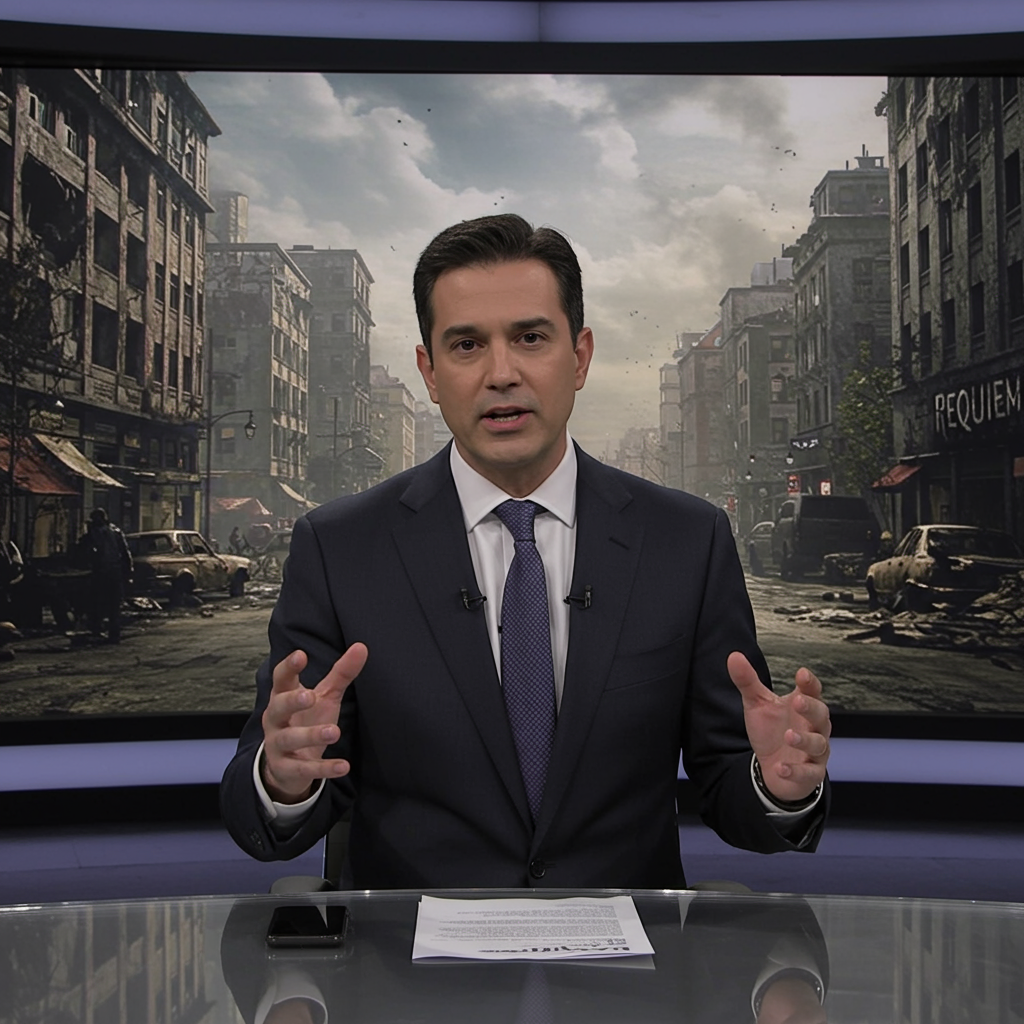Resident Evil Requiem Producer Q&A: Why Raccoon City Returns
The announcement of Resident Evil Requiem (officially titled Resident Evil 9 Requiem and set for release on February 27, 2026, for PS5, Xbox Series X|S, and PC), sent shivers down the spines of survival horror fans. Marking a significant return to the series’ roots, the game brings players back to the iconic, shattered landscape of Raccoon City. To get a deeper insight into what this new entry holds, PlayStation Blog caught up with Producer Masato Kumazawa.
Kumazawa shed light on the game’s narrative ambitions, its deliberate focus on intense horror, and the decision to revisit a location synonymous with the franchise’s legacy, nearly 30 years after its devastating demise.
—
Unpacking the Title: More Than Just a Finale
PlayStation Blog: What does “Requiem” infer about the game’s story?
Masato Kumazawa: The title “Requiem” carries multiple layers of meaning. It’s a requiem for our protagonist, Grace Ashcroft, as she grapples with the loss of her mother eight years prior. It’s also a requiem for the countless lives tragically lost in the Raccoon City incident. As players progress and ultimately complete the game, I believe they will uncover even more profound interpretations of the subtitle.
Choosing a story set amidst the ruins of Raccoon City felt fitting, so centering it around a character with a strong personal connection to the city itself was essential.
Introducing Grace Ashcroft: A Relatable Protagonist
PlayStation Blog: What made you want to bring back the Ashcroft family from the Resident Evil Outbreak series, and how does Grace’s inexperience factor into the player’s journey?
Masato Kumazawa: When crafting a narrative within Raccoon City’s remnants, we knew we needed a character deeply tied to the city’s history. In Resident Evil Requiem, which deliberately emphasizes horror, we introduce Grace as a new, relatable protagonist, a stark contrast to previous hardened heroes like Leon or Chris.
Grace, an FBI intelligence analyst, is intentionally portrayed as introverted and easily scared. Her vulnerability mirrors the player’s own potential reactions, amplifying tension and immersion. You’ll witness her breath quicken in dark corridors or jump in fright at sudden enemy appearances. Grace has a low tolerance for fear initially, but her journey is one of growth. She gradually confronts the horrors around her with increasing courage. By the end of the game, we are confident players will have developed a strong affection for her. While considered, characters like Leon were less suitable for the specific horror experience we intended because they aren’t easily frightened.
Returning to Hallowed Ground: Raccoon City’s Legacy
PlayStation Blog: We clearly see the ruins of Raccoon City and the Raccoon City Police Department in the reveal trailer. Why return to this iconic setting?
Masato Kumazawa: Recent mainline titles, like Resident Evil 7 and Resident Evil Village, expanded the series’ universe by focusing on incidents involving the Winters family in new locations. With Resident Evil Requiem, however, we aimed to reconnect with the overarching narrative rooted in Raccoon City and the sinister machinations of the Umbrella Corporation.
Setting the game approximately 30 years after the city’s destruction felt incredibly fitting, especially as the Resident Evil series celebrates its 30th anniversary [Editor’s Note: The series’ 30th anniversary is in March 2026, shortly after the game’s release]. Bringing a new story to this location, specifically set around 2027 or 2028, allows us to explore its enduring impact. It’s worth noting that revisiting such a pivotal, well-documented event was a daunting task for the development team, with some initially thinking they couldn’t touch Raccoon City again given its complex history and the many popular characters already tied to the original incident.
Gameplay Perspectives: Choice is Key
PlayStation Blog: Was Village’s post-launch third-person perspective DLC a test for allowing both first and third-person perspectives in Requiem? Why was that an important option to give to players?
Masato Kumazawa: The third-person mode added to Resident Evil Village was developed purely in response to strong fan demand and was not intended as a prototype for future titles. Our analysis of recent gameplay trends showed that many players exclusively prefer either first-person or third-person horror games.
Driven by the desire for all Resident Evil fans to fully enjoy the latest installment, we included both perspectives in Resident Evil Requiem. This lets players choose whether they want to experience the horror up close with tense, realistic gameplay (first-person) or through a more traditional over-the-shoulder camera (third-person).
PlayStation Blog: What are the challenges in developing the game to be played so smoothly in both first and third-person at any time?
Masato Kumazawa: While some might think changing perspective in modern 3D games is simple, it’s quite complex, especially in survival horror. Delicate adjustments are made to evoke fear, and the requirements differ significantly between first-person and third-person. This affects character models, animations, fine-tuned balance, UI elements, sound design, and much more. It genuinely feels like developing two separate games in parallel.
The Philosophy: “Addictive Fear” Takes Center Stage
PlayStation Blog: What would you say are the philosophy and themes of Resident Evil Requiem in comparison to previous games?
Masato Kumazawa: The core concept of Resident Evil Requiem is “‘addictive fear.”’ It’s that sense of experiencing something terrifying yet being unable to resist the compulsion to know what happens next – you’re driven to keep going.
Fear is something players can grow accustomed to over time, but with this title, we’ve been more conscious than ever about maintaining a consistent sense of tension throughout the experience. This strong emphasis on horror differentiates Requiem from recent entries like Resident Evil Village and Resident Evil 4, which, while still horror, leaned more heavily into action. Requiem marks a deliberate return to the series’ roots with a primary focus on terrifying players. Players can expect classic survival horror staples like intense chase sequences – reminiscent of past pursuers – and significant puzzle solving balanced with combat and narrative progression.
The RE Engine’s Continued Evolution
PlayStation Blog: Are there any notable graphical improvements you’d pinpoint in the trailer that really highlight improvements through increased familiarity with the RE Engine?
Masato Kumazawa: The RE Engine, which has powered numerous titles, continues to evolve with each project. In the trailer, you can see incredible detail in the visuals, such as sweat trickling down Grace’s skin, the delicate texture of her hair, and the subtle trembling of her lips – all meticulously rendered to convey her anxiety and tension.
—
Resident Evil Requiem promises a deeply unsettling yet compelling return to the franchise’s most infamous location, viewed through the eyes of a vulnerable, relatable new protagonist. With its commitment to “addictive fear” and flexible gameplay perspectives, it aims to satisfy both classic survival horror fans and those who prefer a more modern approach, setting the stage for the series’ exciting future as it approaches a major milestone.




